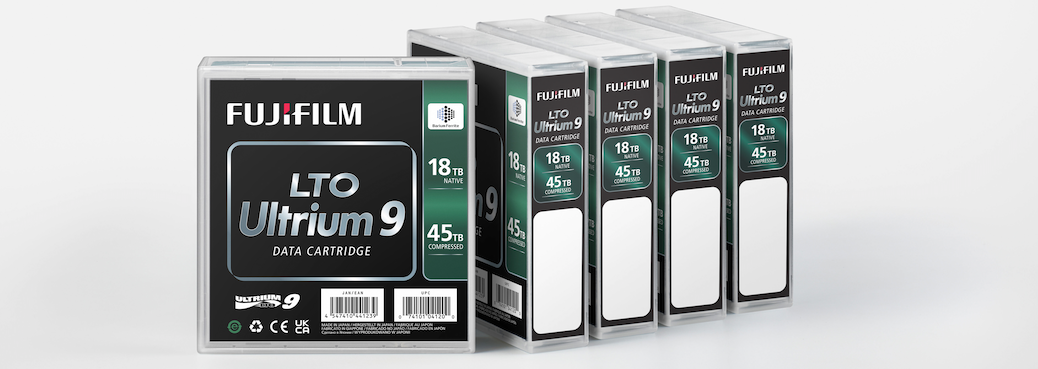Executive Q & A: Tom Nakatani, President of FUJIFILM Recording Media U.S.A., Inc.
In this executive Q & A, Tom Nakatani, president of FUJIFILM Recording Media U.S.A., Inc. (FRMU) discusses how tape technology plays a vital role in the world of data storage now and in the future.

Q1) Tell us a bit about yourself, your career at Fujifilm and how you ended up as president of FRMU?
I don’t like to age myself, but I have been in the Recording Media Business for 25 years since I joined Fujifilm in 1997. I worked primarily in international sales and marketing, responsible for key customers and partners. I also spent about six years at the European headquarters in Germany. Most recently I was assigned as VP of Sales and Marketing in the U.S. in September of 2020 before being appointed president of FRMU as of July 1st of this year. As president, I am responsible for the sales and profitability of this division including our Bedford manufacturing facility. I’m pleased to say Bedford is a world class operation with many cutting edge technologies and sustainability initiatives in place. It’s also the world’s largest LTO manufacturing facility, producing the greenest form of storage. But our biggest asset is our team of employees across the organization, from coast to coast, dedicated to exceptional customer satisfaction.
Q2) What are some of the biggest challenges facing the data storage industry today?
I think the biggest challenge starts with the ongoing and escalating digital transformation that is generating more data than we ever could have imagined even ten years ago. We are now firmly in the zettabyte age where we have a tendency to keep everything indefinitely and we’re afraid to delete anything. And rightfully so, as the value of data has increased and in many ways it is the new currency in this digital economy.
But the question is, how can we continue to manage ever increasing volumes of data that are growing exponentially? How can the industry afford it from a TCO perspective and from an energy consumption perspective? The IT industry needs to reduce its impact on global warming and climate change. And how do we protect the data from theft or ransomware? The IT industry needs a cost-effective way to prevent unauthorized access by securing data in offline, offsite locations.
These are significant challenges but tape solutions are part of the answer. It simply requires a strategic approach to data management and getting the right data in the right place at the right time. Why keep inactive data on 24/7 spinning disk that costs a lot and consumes a lot of energy? Why not move it to modern automated tape systems to reduce cost and CO2 footprint? This will free up HDD space for new, active data! Why not make a low cost copy of the data on tape and send it offsite for cyber security reasons? These solutions are available and are being practiced by the most technologically advanced and data intensive customers in the world today including the major hyperscalers.
Q3) How is FRMU innovating to address these challenges?
Together with our global Recording Media colleagues around the world we continue to bring innovative new products and solutions to market. Our tape technology provides the world’s leading companies with high-capacity data storage solutions to help them manage the increasing volumes of valuable data that we just discussed. Our recent release of LTO-9 with 18 TB native and up to 45 TB of compressed capacity is a good example. According to recent studies by industry experts, LTO-9 is even more energy efficient than previous generations of LTO and when compared to HDD can reduce CO2e by more than 95%. In addition, our Bedford facility has come up with innovative ways to custom package our tape products according to specific customer requirements for ease of use and sustainability goals. Our engineering teams have developed diagnostic tools to maximize performance of tape systems for some of our largest customers. We are also very excited about the innovation we are bringing to the object storage market. Our S3 compatible Object Archive software enables access to low cost tape storage with high reliability and security for long term archiving and preservation of valuable but low access data sets.
Q4) What role do you think tape will play in the future?
We believe organizations and enterprises of all kinds will continue to rely on our products for long-term, reliable, secure, eco-friendly and cost-effective data protection and retention. This includes backup for cybersecurity and ransomware protection to active archive for infrequently accessed data to cold archive for so much of the data that is rarely accessed but still has value and can’t be deleted. We have the fundamental building blocks in place to continue increasing areal density and capacity of magnetic linear tape well into the future based on magnetic particle science such as Barium Ferrite, Strontium Ferrite and even Epsilon Ferrite in the more distant future. Our most recent technology demo with IBM showed the potential for 580 TB of native capacity on a single LTO sized cartridge. That’s a lot of data but it’s what will eventually be needed to store and protect data beyond the zettabyte age in an economical and energy efficient manner. I’m sure that advancements will also continue in flash and HDD or new technologies like DNA data storage will come along. But I believe all these technologies will be needed and will complement each other.
For more information, visit: https://datastorage-na.fujifilm.com/lto-tape-data-storage/















